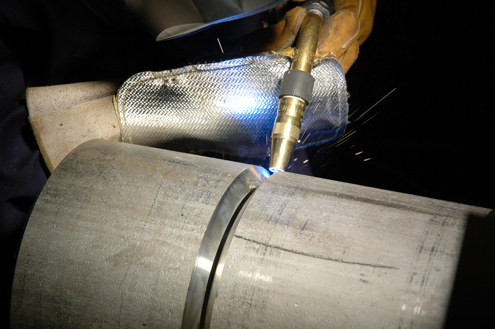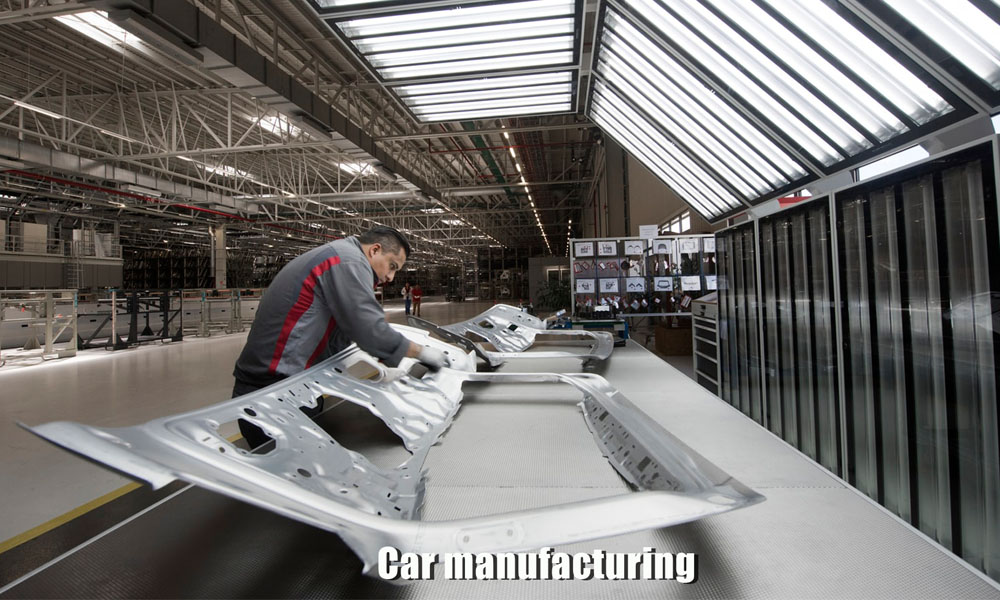Top 5 weld defects handled with care by Belgrade Welding experts
Typical Welding Repair Issues and Just How to Address Them Efficiently
Welding repairs commonly run into a variety of concerns that can jeopardize the honesty of the end product. Typical problems consist of insufficient penetration, porosity, and imbalance, among others. Each defect provides special obstacles that need details strategies for resolution. Comprehending these issues is essential for welders aiming to improve their end results and abilities. This conversation will certainly check out these usual welding repair service concerns and efficient methods to address them.
Poor Infiltration
Poor penetration takes place when the weld steel fails to totally fuse with the base product, leading to weak joints and prospective structural failings. This issue commonly originates from not enough warm input, wrong electrode angle, or incorrect welding rate. Welders might experience insufficient penetration due to a mistake of the required parameters for a certain material thickness or kind. Additionally, contamination on the base product's surface area can prevent reliable bonding, worsening the trouble. To attend to poor penetration, welders must guarantee proper settings on their tools and keep a clean job surface area. Regular examination of welds is suggested to recognize any deficiencies early, permitting timely improvements and the avoidance of compromised structural stability in bonded assemblies.
Porosity
Porosity is a common issue in bonded joints that shows up as tiny gas bubbles trapped within the weld metal. This defect can jeopardize the integrity of the weld, leading to minimized strength and prospective failure under stress and anxiety. Belgrade. Porosity generally arises from contamination, wetness, or improper welding methods, which allow gases to get away into the molten weld swimming pool. To attend to porosity, welders ought to ensure proper surface preparation, maintain a clean workplace, and make use of ideal welding specifications. In addition, picking the right filler product and protecting gas can minimize gas entrapment. Normal assessment and screening of welds can aid identify porosity early, assuring prompt rehabilitative activities are taken, thus maintaining the high quality and reliability of the bonded framework
Misalignment
Misalignment in welding can emerge from different variables, consisting of inappropriate arrangement and thermal growth. Recognizing the origin is essential for effective resolution. A number of adjustment techniques are readily available to realign elements and assure structural stability.
Reasons of Imbalance
Welding imbalance commonly originates from a selection of underlying problems that can jeopardize architectural stability. One primary reason is incorrect fit-up of components before welding, which can lead to voids and unequal surface areas. Variants in thermal development during the welding process can additionally result in distortion, particularly if the products being joined have different coefficients of development. Additionally, insufficient securing and fixturing may fall short to hold components firmly in position, leading to motion throughout welding. Inadequately conserved devices, including welding makers and tools, may introduce variances in the weld grain, additional adding to misalignment. Driver error, stemming from not enough training or experience, can additionally play a substantial function in creating misaligned welds.

Improvement Strategies Available
Dealing with imbalance successfully calls for a combination of rehabilitative techniques tailored to the specific problems handy. One common method is making use of jigs or fixtures to hold parts in the right setting during welding, making sure consistent positioning. In addition, preheating the products can help reduce distortion and improve fit-up. For considerable misalignment, mechanical realignment strategies, such as making use of hydraulic jacks or clamps, can be utilized to correct the position before welding. Post-weld warm therapy may likewise be necessary to relieve tensions triggered by imbalance. Ultimately, cautious evaluation and change during the configuration phase can stop imbalance issues from ending up being significant problems, advertising a smoother welding procedure and improving total architectural stability.
Distortion
Distortion is a common challenge in welding that can arise from numerous aspects, consisting of irregular heating and air conditioning. Comprehending the reasons for distortion is essential for implementing reliable avoidance techniques. Addressing this concern not just enhances structural honesty but likewise boosts the general top quality of the weld.
Sources of Distortion
When subjected to the extreme heat of welding, materials commonly undergo modifications that can result in distortion. This sensation mainly occurs from thermal development and tightening during the welding process. As the weld location heats up, the material increases; upon cooling, it acquires, which can produce interior stress and anxieties. On top of that, uneven heating throughout a work surface can worsen these anxieties, causing bending or flexing. The kind of material also plays a considerable function; metals with differing thermal conductivity and coefficients of expansion may react in different ways, resulting in unforeseeable distortions. Moreover, poor joint style and poor fixturing can add to imbalance during welding, raising the possibility of distortion. Comprehending these causes is necessary for effective welding repair and prevention methods.
Avoidance Techniques
Efficient prevention techniques for distortion throughout welding concentrate on controlling warmth input and ensuring correct joint style. Preserving a constant warm input helps to reduce thermal development and tightening, which can bring about distortion. Making use of methods such as preheating the work surface can likewise minimize the temperature level slope, advertising consistent heating. Additionally, choosing suitable joint styles, such as T-joints or lap joints, can enhance security and reduce stress focus. Carrying out proper fixturing to protect the workpieces in position even more help in preserving alignment throughout the welding process. Staggered welding sequences can distribute warm much more evenly, preventing localized distortion. By applying these techniques, welders can substantially reduce the likelihood of distortion and improve the general top quality of their welds.
Splitting
Breaking is a common issue experienced in welding fixings, typically resulting from numerous elements such as incorrect cooling prices, product option, or poor joint preparation. The occurrence of splits can considerably endanger the honesty of the weld, leading to possible failures throughout procedure. To resolve this issue, welders have to initially analyze the get more info origin, ensuring that products are suitable and suitably chosen for the details application. In addition, regulating the air conditioning rate throughout the welding procedure is essential; rapid cooling can generate stress and lead to breaking. Proper joint layout and preparation additionally add to decreasing the threat. Applying these strategies can boost weld quality and toughness, inevitably minimizing the chance of splitting in completed weldments.

Incomplete Fusion
A substantial concern in welding fixings is incomplete combination, which takes place when the weld metal does not properly bond with the base product or previous weld passes - Belgrade. This issue can result in weak points in the joint, potentially compromising the honesty of the welded structure. Elements contributing to incomplete fusion include insufficient warmth input, incorrect welding technique, and contamination of the surfaces being joined. To resolve this problem efficiently, welders must assure appropriate pre-weld cleaning and surface prep work, in addition to adjust their welding specifications to accomplish sufficient penetration and combination. Routine assessment throughout the welding process can also assist identify insufficient fusion early, allowing for prompt rehabilitative procedures to improve the total top quality of the weld
Overheating
While welding repair work can boost structural honesty, overheating offers a considerable challenge that can lead to material destruction. Excessive warm throughout welding can change the mechanical residential or commercial properties of steels, resulting in reduced stamina, raised brittleness, and warping. This sensation is specifically essential in high-stress applications where architectural reliability is vital. Identifying overheating can involve aesthetic assessments for discoloration or distortion, as well as keeping track of temperature level throughout the welding process. To reduce the dangers related to getting too hot, welders need to use suitable methods, such as controlling heat input, changing travel rate, and utilizing ideal filler products. Additionally, executing pre- and post-weld warm therapies can assist bring back product homes and improve the total quality of the repair, making certain long-term performance and safety and security.
Regularly Asked Concerns
What Are the Usual Indications of a Welding Issue?

Just How Can I Evaluate My Welds for Top quality?
To examine welds for high quality, one can utilize aesthetic evaluations, ultrasonic screening, and radiographic approaches. Each method guarantees structural honesty, identifies issues, and verifies adherence to defined standards, eventually enhancing the dependability of the welded joints.
What Security Precautions Should I Take While Welding?
When welding, one ought to focus on security by using appropriate individual protective equipment, guaranteeing appropriate ventilation, protecting combustible products away, preserving a tidy work area, and being conscious of environments to stop crashes and injuries.
Can I Repair a Weld Without Redesigning the Entire Joint?
Repairing a weld without renovating the entire joint is possible, depending on the damage (Welding). Methods such as grinding, including filler product, or utilizing a welding process can properly resolve particular flaws while protecting the surrounding framework
What Devices Are Essential for Reliable Welding Services?
Necessary tools for effective welding repair services consist of a welding machine, cable brush, mill, protective gear, clamps, and filler products. Each device plays a vital function in making certain top quality and security during the repair service process. Porosity typically occurs from contamination, wetness, or incorrect welding methods, which allow gases to escape right into the molten weld pool. Inadequately kept tools, consisting of welding makers and tools, might introduce inconsistencies in the weld bead, additional adding to imbalance. When subjected to the intense heat of welding, products usually go through adjustments that can lead to distortion. Breaking is a typical concern experienced in welding fixings, typically resulting from numerous elements such as incorrect air conditioning rates, product selection, or poor joint preparation. A considerable concern in welding repair services is incomplete blend, which occurs when the weld steel does not adequately bond with the base material or previous weld passes.